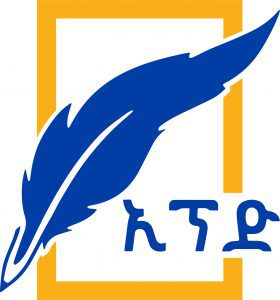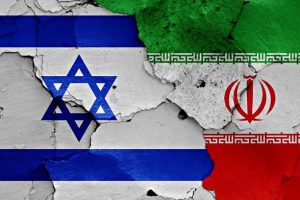
Over the last 50 years, Ethiopia has experimented on various development ideas most of which were imported from abroad in a manner that was neither palatable to the public nor brought up the desired results. During the imperial regime, the idea of making Ethiopia” the breadbasket of Africa” utterly failed and resulted in recurrent spells of drought that killed human and animal resources of the country.
The packages of development policies issued by EPRDF’s “revolutionary democracy” collapsed with the onset of war triggered by TPLF.
The “Medemer” idea locally generated by Prime Minister Abiy Ahmed is now seven years old with a wide range of operational programs, most of which were already a success. Even then, there is still more to be done not only in terms of implementing the idea but also expanding it into the various sectors of the Ethiopian economy. The merit of Medemer, which some writers translate as synergy, lies in the fact that it is home grown and currently showing results that are promising. However, although many believe that Medemer is already complete, we need to live more to see if the results so far gained can endure the test of time.
Ideas are meaningless if they are not put into action with all the necessary inputs for the benefit of the people of Ethiopia. The whole ideas knitted into the Homegrown National Economy Policy, the National Green Legacy Imitative, Ecotourism projects and the Dining for the Nation system of fund raising, Yelemat Trufat and Made in Ethiopia programs show that locally generated ideas mattered and so far fruitful.
All the above-mentioned programs were participatory in a mix of various inputs and contributions. The people of Ethiopia participated with a strong hope and commitment, hoping that ideas produced locally would pay off. Indeed it was so. This is not about political polemics but about bread and butter for the people of Ethiopia.
As for politics in Ethiopia, the trend shows that there are two groups, the battle between ethnocentricity and civility of ideas is already raging. The ethno-centrists are busy running backwards trying to discredit current development while those who claim to be civil nationalists are messing up papers for their next press release.
What matters is action and not hate-induced bluffing and war mongering in the name of liberation. The people of Ethiopia demand peace, food security, infrastructure development, public health services, education and social welfare and not flowery words and biased criticisms of everything under the sun.
The people of Ethiopia are not interested in callous politicking on social media or views that do not hold water when tested in practice. They need peace, respect and human dignity that they naturally deserve. All ideas, strategies and tactics that lead to the satisfaction of the people of Ethiopia are valid and useful.
If we look at the idea behind the National Green Legacy Initiative, we can easily see that the people of Ethiopia bought the idea and showed it on their perception on the program for the last seven years. The implementation of the program led not only to the marked increase in forest coverage of the country but also led to improvements in climate conditions across the country. Furthermore, it also helped to rehabilitate the wild life habitat for the animals in the country. In addition, the development of food forests in rural Ethiopia contributed to the nutritional supply of the people.
The Green Legacy Initiative has also contributed to promoting the Yelemat Trufat Program in the sense that it provided the necessary ecological precondition for the promotion of food security and income generation projects for local consumption and for export as well.
The same logic holds for the Made in Ethiopia Program, which has enabled the country to recover more than two billion USD every year in import substitution. The development of the manufacturing sector had contributed a lot to agricultural mechanization, which in turn helped to increase production and productivity.
On the other hand, the development of both industrial and agro-industrial parks in the country was a new idea that was planned in view of promoting the manufacturing sector which would play a leading role in the country’s economy in the future.
Constructive and developmental ideas are mostly generated through professional and goal oriented dialogues. Ideas generated through dialogue are useful only when they are put into practice and what we have been able to observe in the last seven years show that better ideas are tested through practice and the concrete benefits they offer to the people of Ethiopia.
On the other hand, the proliferation of impractical and imaginary ideas professed by those who exist today and live by the past defunct ideas certainly exerts counterproductive and destructive results. They reject every bit of an idea that does not fit into their preconceived ideas about what they want to do in opposing reforms and any level of physical and mental changes.
Those engaged in critical criticism on the development programs of the country by forwarding better, competitive alternative ideas that could bring forth tangible and measurable advantages for the people of Ethiopia. Anything short of this is just a mental exercise that may be appreciated by few persons.
Ethiopians overseas who do not agree with the policies of the government restrict themselves to criticisms but always fail to provide alternative approaches for peaceful development of the country, visibly benefiting from the chaos they create in the country.
The author believes that there is no good or bad idea but the best idea is the one that can be implemented by the vast majority of the population for the benefit of the nation.
Moreover, it is very important to link any idea with the purpose, goals and objectives for which it is forwarded and the results that are expected.
Development programs are applicable and result-based only when they are interconnected and reciprocated. Political ideas are forwarded at will and may not require the standards that are to be enforced for development ideas.
Many Ethiopians here and abroad talk and write about the unity of the country and the importance of peace. However, unity can be sustained only when it is put into practice. The history of this country and more recent unity exhibited by the people of Ethiopia in their historic actions in funding the construction of GERD could be taken as a good example. Unity among the people of Ethiopia at the advent of foreign aggression has repeatedly been observed. It is very important to replicate such action by cherishing common narratives and actions on the development of the country.
In Ethiopia, transformational development faces numerous problems that are interconnected and persistent over time. The choice of development path and related strategies is one of them. As stated earlier, the nation was busy copying development models of other countries without even deeply analyzing their relevance, levels and mode of operation. Even today, the fact that we have some 100 registered parties shows the magnitude of our problems.
Any development program has its own subjective and objective sides. First, there is a problem of cognition. That is how many persons understand and are ready to act according to a development plan. On the other hand, development is something tangible and tractable. It requires a thorough analysis of the objective reality in the country from development perspectives and not from mere political squabbling and polemics.
Current development programs in Ethiopia are being conducted in the midst of challenges that threaten the lives of citizens who cannot protect themselves from politically induced killings. The idea of trying to resolve every problem with the gun is long obsolete, expensive, and a threat to national peace and sovereignty, and yet we have thousands of gun-tottering killers who are not interested in any form of national development programs.
Stressing on national development program does not in any manner rule out the importance of economic integration in international multi-lateral arrangements like the WTO. Learning from the experience of other countries and benchmarking on their development programs is useful and necessary for ensuring the national development of countries like Ethiopia.
Prime Minister Abiy Ahmed has declared that in the next fiscal year the government will embark on the construction of a fertilizer factory to recover the cost of importing fertilizers and for export to other countries. This is an important project in the national investment program because the products and subsidiary products from a fertilizer factory can serve as an input for other economic sectors like agriculture. The idea of constructing such a factory was developed out of the crucial role that agriculture and industry play in the national economy of the country.
Digitalization of the national economy is now a major breakthrough in the development pathway of the country. This technological development will further enhance the overall development programs of the country adding value to the quality of development performance in Ethiopia. This also encompasses the utilization of AI and robotics in the management of manufacturing industries and other electronic based development programs under formation in the country.
To sum up this modest analysis, development programs in Ethiopia will accelerate by establishing the necessary linkage between all sectors in a well-organized national development strategy the country is vigorously attempting to pursue. There is still more to be done in involving the private sector in the major sectors of the national economy.
BY SOLOMON DIBABA
THE ETHIOPIAN HERALD SATURDAY 17 MAY 2025



